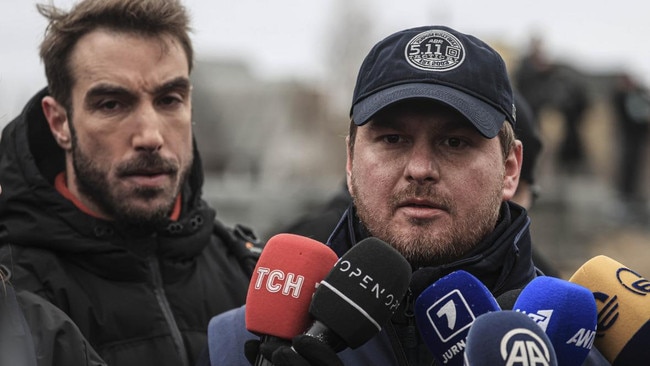Step by hi-tech step, the Bucha killers are being hunted down
The Russian soldiers did not think to disable the town’s 30 government security cameras and left lists of personnel behind.

The faces in the screengrabs are grim and unsmiling, and many are strikingly young.
The men walk with a swagger, in bulky body armour and holding rifles. They are Russian soldiers, filmed in the act of invading Ukraine, and if Ruslan Kravchenko has his way this will be the evidence that sends them to prison.
Mr Kravchenko is chief prosecutor in Bucha, on the outskirts of Kyiv, a place that has become a symbol of the brutality of the Russian forces. Since the invaders withdrew at the end of last month, hundreds of bodies have been recovered in the town, many of them tied up and shot in the head.
The Russians in Bucha looted and burnt property and tortured and raped men and women before giving up on their attempt to take Kyiv and retreating across the border.
An intense effort is under way to bring them to justice, drawing on international expertise and using DNA analysis, security cameras, satellites, drones and facial recognition software.
“The history of the Second World War shows us that war criminals can still be found and prosecuted even in our own generation,” Mr Kravchenko says.
“My principal goal and that of my colleagues is to find and punish all of them. The first thing we have to do is identify them.”
In Bucha alone, a town of 40,000 people, 300 prosecutors, police officers and agents of the intelligence agency, the Security Service of Ukraine, are working on the case. They are assisted by police forensic experts from France and Slovakia and the latest investigative technology.
The task of identification is made urgent by the need to return the dead for burial by their families. A refrigerated truck stands in the centre of Bucha, where people missing their loved ones come to view unidentified remains.
Half of the 350 bodies recovered so far have undergone post-mortem examinations. Crime scenes, including sites of torture and rape, have been sifted by forensic investigators.
Satellite photos taken by the commercial company Maxar are being scrutinised for images showing the digging of mass graves and the dumping of bodies in the street.
Thirty drones have been used to take aerial images of the town to map the physical damage done to it.
“Crimes against people and crimes against property,” said Mr Kravchenko, who has investigated Russian war crimes in the Russian-occupied regions of Crimea and Donbas. “We are looking at all of them.”
Now the investigators are attempting what seems on the face of it an impossible task – to identify and track down individual soldiers. They have been helped by the carelessness of the men they are hunting. The investigators have come upon lists of personnel that were left behind. The Russians did not think to disable the town’s 30 government security cameras.
Surveillance footage from a glue factory used by the occupiers has been downloaded. The investigators have more than 30 terabytes of data. It is from these that the screengrabs are taken, producing high-quality images of Russian faces. These are filed in what Mr Kravchenko calls his “album”, a database of about 500 people.
“Every day we are adding to it with more and more pictures,” he said. “When witnesses come forward, we show it to them so they can point to the ones who carried out the war crimes.”
The security service is providing intercepts of communications among Russians who relied on unsecured civilian mobile phones, vulnerable to tapping by the Ukrainian eavesdroppers.
Mr Kravchenko is reluctant to go into detail about the most striking tool of all – facial recognition software that scans the internet, including social media pages, and puts names to the faces in his album.
Then there is the video evidence gleaned by brave Ukrainians. He shows a video shot by a man on his mobile phone through a rain-streaked window at the meeting point of Yablunska and Yaremchiuka streets on March 18. It shows four human forms, bound and kneeling, and soldiers nearby. The man who took it said that after he stopped filming, the prisoners were shot.
“Ukraine today is a slaughterhouse right in the heart of Europe,” Amal Clooney said at a meeting of the UN Security Council on Wednesday night. The human rights lawyer, who is adviser to Karim Khan, the chief prosecutor of the International Criminal Court, called for war criminals to be brought to justice.
The Times



To join the conversation, please log in. Don't have an account? Register
Join the conversation, you are commenting as Logout